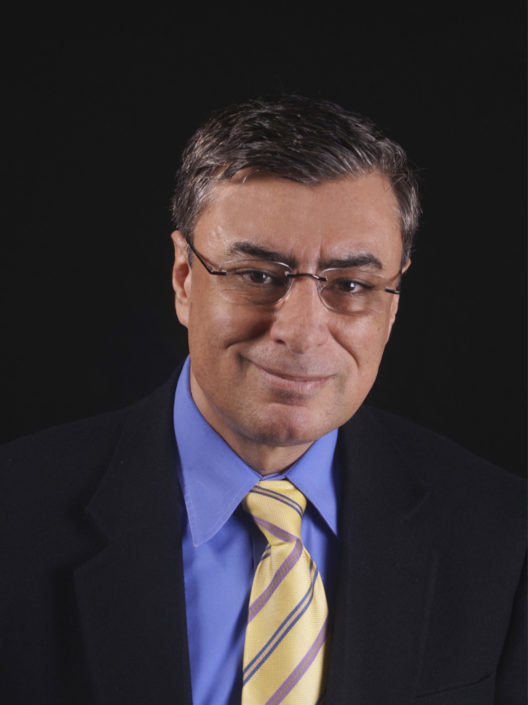The quantum computing market has seen exponential growth over the past several years and has a projected year-over-year growth rate of around 30% into the foreseeable future. University of Utah electrical and computer engineering USTAR Professor Massood Tabib-Azar has been pioneering research in the quantum computing field since the early 90’s, when he introduced the first ever course on the topic at his previous university.
 Tabib-Azar recently had a manuscript, “SAW Coupled Diamond NV- Spin Oscillators and Quantum Sensors,” accepted to be presented at the IEEE Sensors Conference later this fall in Dallas. The manuscript deals with surface acoustic wave (SAW) devices used extensively in information processing for filtering purposes. A recent discovery found that these devices generate their own magnetic fields, which can be used to manipulate electron spins in trap energy levels in certain materials – including trap or color centers in diamond. In his manuscript, Tabib-Azar investigates the addition of diamond to the SAW devices and the resulting energy manipulation abilities.
Tabib-Azar recently had a manuscript, “SAW Coupled Diamond NV- Spin Oscillators and Quantum Sensors,” accepted to be presented at the IEEE Sensors Conference later this fall in Dallas. The manuscript deals with surface acoustic wave (SAW) devices used extensively in information processing for filtering purposes. A recent discovery found that these devices generate their own magnetic fields, which can be used to manipulate electron spins in trap energy levels in certain materials – including trap or color centers in diamond. In his manuscript, Tabib-Azar investigates the addition of diamond to the SAW devices and the resulting energy manipulation abilities.
“Quantum computers can solve problems that our classical computers cannot,” said Azar. “When we use classical computers to simulate or try to understand nature, we are basically reducing the complexity of things so the computer can simulate it. When you have a quantum computer simulating quantum systems (i.e., nature), you take care of all the complexities; it enables us to understand the nature at its fullest.”
Erwin Schrödinger, one of the founding fathers of quantum mechanics, has a thought experiment known as “Schrödinger’s Cat” in which he envisioned a cat in a cage with a poison vial controlled by a trigger. This trigger was then connected to a device containing a radioactive material that randomly emits particles that may hit the trigger, ultimately releasing the poison and killing the cat. As long as a person does not peek into the cage – according to quantum mechanics – the cat is in a mixed or “superposition” of live and dead states.
Quantum computers use devices (quantum bits or Qubits) that have the ability to be in these mixed states, enabling them to carry out a calculation on an immensely large number of different configurations simultaneously – making them very powerful. Classical computers use binary logic levels of “1” or “0” that cannot be in the mixed “0” and “1” states. In classical terms, the cat is either dead or alive, irrespective of if one peeks into the cage or not. In addition to superposition, quantum computers also use “entanglement” that according to Einstein leads to “spooky action at a distance.” Entanglement allows for secure quantum communications and dense computer coding.
As the field of quantum computing expands, the industries impacted by the outcomes of research like Tabib-Azar’s grow, too. From drug development to transportation and combatting global warming, quantum computing is being utilized for simulating and solving complex problems everywhere. Three years ago, Tabib-Azar introduced the first quantum computing course at the University of Utah – one of the only in the country to cover both the hardware and software side of quantum computing. Now, he hopes to encourage more students to take interest in this rapidly expanding field.
“We are really excited about students interested in quantum computing,” says Tabib-Azar. “I have lots of projects I’d be more than happy to offer students in quantum computing, quantum sensing, and quantum information processing areas.”
Professor Tabib-Azar’s course, Introduction to Quantum Computers, is currently offered to both undergraduate and graduate students every Spring semester. Check out the course syllabus here.